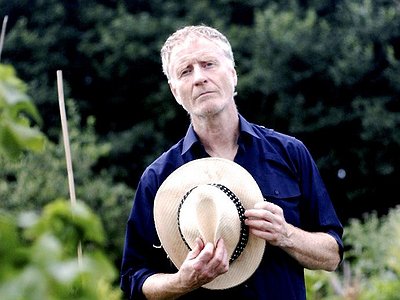Part 2
Collaborations can take on many forms. What role do they play in your approach and what are your preferred ways of engaging with other creatives through, for example, file sharing, jamming or just talking about ideas?
Collaboration is a major part of my working life, more so now than at any other time. The outset of my musical career was a wonderful daily collaboration with Cathal as we developed Microdisney in 1980/81/82. That would be a daily meet and an exchange of ideas in a small room, Yamaha SK10, Gibson SG and a Korg preset drum machine. I would imagine everyday a song emerged, and Cathal would then take the song away to add a lyric.
Throughout the High Llamas, I wrote alone mostly, though the rehearsal of songs would add to the arrangement. In the studio with Charlie Francis and Fulton Dingley who produced with me on ‘Hawaii’ and ‘Cold and Bouncy’, there was always a thorough discussion of ideas.
So now here I am, 2020, and so many collaborations happen. With Cabane, Thomas Van Cottom sends songs as mp3s and I might be aloud to reconstruct them, then we would meet for a week and finalise the process before I added string arrangements. Fryars, Ben Garrett and myself are in his studio face-to-face and working in a very traditional way, firing ideas at each other. Again I would take the work away and add arrangement. With Tim Burgess on his solo record, I worked in isolation, scored the parts and sent the parts to Nashville where Kurt Wagner and Tim ran the sessions. On the Susan James record she was in LA and we Face Timed full rehearsals to teach the band the parts, again I worked with demos in London to create arrangement.
Domenico Lancellotti was on tour with Gal Costa and sent i-Phone-filmed demos of songs, freshly written in the moment. I then added demo arrangements and Domenico then visited London where we recorded together. Some jamming happened there.
On Marc Fitoussi’s movies, the hit points were literally fired from the edit suite in Paris to London where I might score a scratch demo to see whether it worked in the edit. Very live in the moment stuff.
I think the ultimate collaboration was ‘Turn On’ in 1995. Tim Gane, Andy Ramsay and myself, just on the cusp of the full digital handover, but for us, still working on tape, cutting tape every day, and pre-automation, mixing with 8 hands on the console, as Fulton Dingley mixed in.
My Stereolab hours with Tim, John McEntire and Andy in the room, or even Jim O’Rourke, were very collaborative moment-by-moment, reactive sessions. In the room, live, down on tape-in the moment collaborations.
Could you take us through a day in your life, from a possible morning routine through to your work? Do you have a fixed schedule? How do music and other aspects of your life feed back into each other - do you separate them or instead try to make them blend seamlessly?
It's odd at the moment as I am getting over a long term illness, so treatment kind of controls your day. I adapt the day to treatment.
Otherwise, I’m getting my time back as your children move on, you can actually use the morning in full. If I am scoring strings, I will be in front of the keys and computer by 10 am and will work through until 6, and then maybe listen back to ideas at 10pm to see if anything is exciting me.
If I am recording, I have to wait until I have an empty house before setting up mics and trying to use the house as a live room. Again that set-up will stay in place for as long as I can keep it up and I work long hours to get the stuff down. Then I would break down the mics and headphone-set up, return keys and amps, and start to edit on a 10-to-6 daily basis.
I am fond of drifting into my studio room at 9pm to listen, because the work sounds different at night, perhaps in a new mental space.
If I am heading to Press Play to record a string session, it’s an early start to set up the tracks and prep the string section, work 2-3 hour sessions then edit at Press Play until 8pm.
Could you describe your creative process on the basis of a piece or album that's particularly dear to you, please? Where did the ideas come from, how were they transformed in your mind, what did you start with and how do you refine these beginnings into the finished work of art?
OK. Lets go for ‘Snowbug’ from 1999, recorded in James McBride’s studio in Elephant and Castle, South London. It was when my interest in Brazilian 60s and 70s music was very much in the ascendancy. But I was also trying to spin in folk influence from the UK or even Polynesia, and finally a flavour of Sly Stone possibly trailed by listening to Shuggie Otis’ ‘Inspiration Information'.
So, I wanted to put the nylon string guitar at the harmonic centre of most songs. But I also felt that the previous records were too precise in recording, so I was also trying to row back from tight performances and achieve looseness. I also wanted sounds to be more abrasive. The piano I bought for the studio was ropey and hard to tune. I tacked the hammerheads to give most of the piano’s a rasping clang, and tracked the piano with marimba which is naturally always slightly sharp. So arranged sound would then carry inherent dissonance.
The drums went super dry, and they moved in close. The drum machines clanged through Lovetone ring modulators and filters as did the Wurlitzer, the Rhodes waa waa wine and the rough banjo dang formed a backing track to songs I imagined being performed by Milton Nascimento or Chico Barque. Laetitia Sadier and Mary Hansen (we miss you) lulled a union vocal to my quivering non-vocal, but Marcus Holdaway’s velvet tones, with my mid-register, gave us some union male weight. The string quartet was dry and out of phase.
I remember going home late one night and watching The Wicker Man through, and the soundtrack (Magnet) staying with me and ending up as the major feel on ‘Harpers Romo’. ‘Harpers Romo’ … Sly Stone waa waa Rhodes and clavinet, dancing bright acoustic guitars, clanging tack pianos, lulled unison vocals. No wonder nobody gave a damn.
So far from Post Rock, but John McEntire mixed the record in Electrical in Chicago with the legendary Steve Albini checking into the mix room with humorous commentaries and inspiring ideas on society and the future. John’s masterful last touch gave the record a sound that I have never been able to achieve since.
There are many descriptions of the ideal state of mind for being creative. What is it like for you? What supports this ideal state of mind and what are distractions? Are there strategies to enter into this state more easily?
Getting back to an early question regarding copy or originate, there is always a moment when you hear something inspirational. That is always a precious moment when you want to understand the beauty of the music. It lingers with you for a while and perhaps its forgotten. But then you drift into writing and the forgotten moment surfaces as a feeling and eventually composition.
I do believe if you are writing to order, a job, a deadline and nothing is happening, stop and change focus completely. Go to admin, cook, walk, forget and return, remade.
The distraction of social media and 24hour news is there and to us older ones, something that crept up on the process without announcing itself.
We tend to self manage more as well. So that can cause a splash at the wrong time. I do sometimes ruminate on an idea early in the morning, half-awake or late at night. It's like an out-of-hours experience, a little like the detective suddenly coming to a realisation at 2am and immediately reaching for the car keys to check out a lead.








